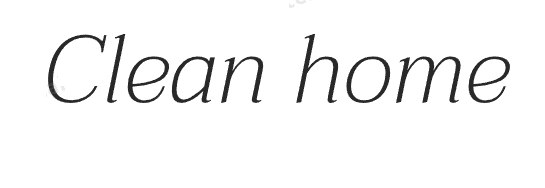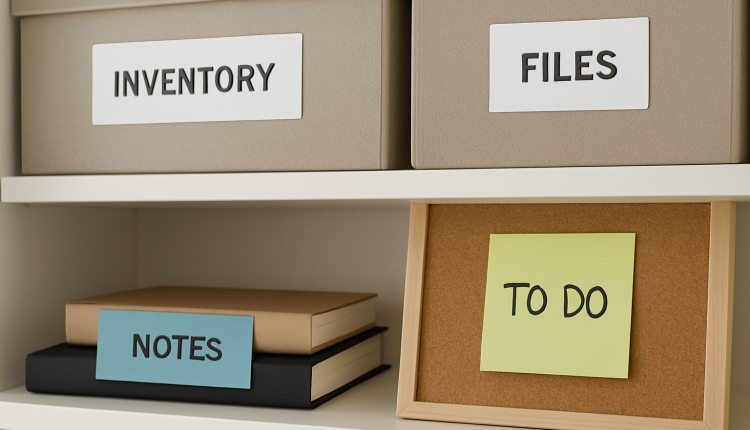Stick It, See It, Do It: How Labels and Visual Cues Can Transform Your Home Organization
In today’s fast-paced world, the battle against clutter and disorganization doesn’t always require massive overhauls or weekend-long cleaning sprees. Sometimes, the secret to a tidy, functional home lies in the simplest tools—labels and visual cues. These low-tech triggers work like gentle reminders, nudging us toward habits that sustain a clean and organized environment day after day.
Why Visual Cues Work
Visual cues tap into how the human brain processes and retains information. Our brains are wired to respond to stimuli we can see. When items are labeled clearly or positioned in a way that signals their function, our decision-making becomes automatic. Instead of thinking, “Where does this go?” or “What should I do next?”, we’re gently guided by the environment itself.
A cluttered home often breeds mental fog. But when order is made visible—when there’s a label on the drawer, a sticky note on the mirror, or a designated spot for every item—it reduces decision fatigue. The space becomes intuitive, and with that comes a sense of ease and control.
Labeling: Your Silent Assistant
Labeling isn’t just for classroom cubbies or warehouse bins. In the home, it’s a form of silent instruction that helps everyone—from toddlers to adults—understand where things belong and what tasks need to be done.
1. Zones and Categories
Create labeled zones in shared areas. For example:
- Kitchen: Use labels inside cabinets or drawers like “Snacks,” “Baking Supplies,” “Lunch Containers.”
- Fridge: Label shelves or bins with “Dairy,” “Leftovers,” or “Use First” to reduce waste and confusion.
- Bathroom: Bins for “Hair Tools,” “First Aid,” or “Travel-Size Toiletries” streamline morning routines.
2. Kids’ Areas
Children thrive on consistency and structure, and labels provide both. Use pictures alongside words for younger children to help them recognize what belongs where—books, blocks, art supplies. These cues promote independence and make clean-up time less of a struggle.
3. Closets and Dressers
Labels on shelves or bins like “Workout Gear,” “Winter Accessories,” or “Donate” can simplify your wardrobe management and reduce morning chaos.
4. Home Office
With remote work more common, organizing office supplies and files is essential. Label drawers for “Bills,” “Receipts,” “To File,” or even categories like “Monday Tasks” and “Completed Projects” to visually track your workload.
Sticky Notes: Small Squares, Big Impact
Sticky notes are underestimated tools for habit-building and daily reminders. Unlike digital alerts that can be swiped away and forgotten, sticky notes remain visible in your physical space until you actively remove them—making them harder to ignore.
1. Morning Routines
Stick reminders on bathroom mirrors: “Drink Water,” “Stretch for 5 Minutes,” “No Phone Until Breakfast.” These serve as morning anchors and help solidify healthy habits.
2. Chore Reminders
On laundry machines, a sticky might say: “Don’t Forget the Dryer Sheet” or “Start Another Load Before Bed.” On a dishwasher: “Empty Me by 8 PM.”
3. Productivity Boosters
Place encouraging or instructional notes in your workspace: “Check Calendar First,” “Close Unused Tabs,” “5-Minute Email Sprint.” These cues help train your brain to work with intention.
4. Mindful Eating or Budgeting
Stick notes inside cabinets or on the fridge that say: “Do I Need This or Want This?” or “Check the Meal Plan First.” In wallets or next to credit cards: “Was this planned?”
Best Practices for Labels and Notes
- Keep it simple: One or two words per label is ideal. Avoid overwhelming with too much information.
- Use clear fonts: Handwritten is fine if legible; otherwise, consider label makers.
- Color-code: Use color as a signal—green for healthy habits, red for reminders, blue for organizing categories.
- Replace as needed: Sticky notes lose their power when they become background noise. Update them regularly to stay effective.
Long-Term Benefits of Visual Organization
- Consistency: When everyone in the home sees the same cues, they can follow the same routines—no more hunting for where the scissors go or who’s unloading the dishwasher.
- Stress Reduction: Fewer questions, fewer decisions, and fewer misplaced items.
- Empowerment: Visual cues support independence—for children, partners, roommates, or even elderly family members who need routine reminders.
- Improved Time Management: Less searching and more doing means a smoother flow to your day.
Start Small, Stick With It
The beauty of visual cues is that they can start small and scale up. Begin with one sticky note on your fridge. Label one drawer. Organize one bin. The clarity these little cues provide often inspires a ripple effect throughout the home.
Eventually, your space begins to “talk back”—guiding you, reminding you, and keeping you on track without you even realizing it. You’re no longer fighting clutter—you’re being gently steered away from it.
Because sometimes, all it takes is a sticky note and a label to make life feel a lot more in order.

